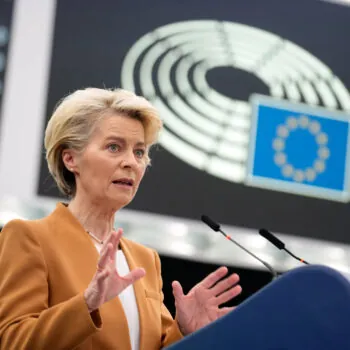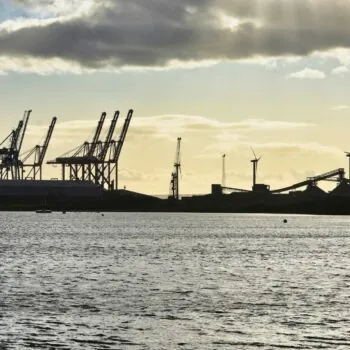The European Commission’s Investment Plan for Europe – of which the European Fund for Strategic Investments (EFSI) is the centrepiece – seeks to catalyse at least €315bn of new investment, kick-starting growth and boosting job creation in the European economy. It is an important opportunity to deliver not just short term growth but also long term value by directing investment to where it is most needed. As such, how project selection criteria are defined will be critical in ensuring investment is mobilised to finance mobilise high-value, low risk projects where they are most needed.
It is a hugely important step. Investment in Europe remains at levels worryingly below those of the pre-financial crisis era thus halting progress towards a full recovery. In 2014 for example, total investment was 15% (€430bn) below 2007 levels; in the hardest-hit Member States, the decline in investment has been even more dramatic, with the shortfall ranging from 25% to over 60%. Sluggish domestic demand, driven in part by a reluctance of households and corporates to take on debt to invest, has played a critical role in the ongoing slump.
In response, the Commission’s Director General for Economic and Financial Affairs has said: “there is a need to put in place policies to support capital formation in the euro area. By boosting infrastructure spending, the European Investment Plan should play central role in ensuring a sustained rebound in investment in 2015/2016.”
This makes sense. Major investments are required for Europe’s energy transition as set out by the new Energy Union framework. The European Commission estimates that €200 billion of annual investment in energy efficiency, renewables, networks and other clean energy assets is needed to deliver an Energy Union that is consistent with EU 2030 and 2050 climate goals. The EFSI will be a key instrument to deliver these investments. To ensure successful delivering of its high level goals, there needs to be a dual focus on ensuring financing is directed toward the ‘right’ projects and ensuring the ‘right’ projects are actually available for financing.
Financing the ‘right’ projects
The proposed EFSI regulation as adopted by the Economics and Finance Ministers of the 28 Member States (ECOFIN) on 10 March 2015 , stipulates that in finding the ‘right’ projects the following selection criteria should be applied:
- Projects are consistent with Union policies,
- are economically and technically viable,
- provide additionality, and
- maximise where possible the mobilisation of private sector capital.
These are the right high-level aims but in terms of how they will actually impact on selection, the devil will be in the details. E3G’s view is that governance of the Fund should be designed to ensure investment flows to projects that will have the highest impact in terms of creating jobs and growth – but also to ensuring investments are compatible with meeting climate, energy security and affordability tests.
We suggest therefore a range of additional selection criteria to be applied in order to ensure that projects financed under the Investment Plan are fit for purpose. Ultimately, this should ensure that what is financed kick-starts a sustained and sustainable rebound in EU investment. The suggested selection criteria are:
- Exclude high carbon projects that risk early retirement as GHGs targets tighten. This could be achieved through applying an Emissions Performance Standard (EPS) to all projects prior to selection. An EPS tighter than that currently applied by the European Investment Bank (EIB) – and of least to 350 gCO2/kWh – is needed for the EFSI projects to be in line with EU climate objectives to 2030 and beyond. A further test is to apply a “social cost of carbon” when assessing the economic viability of projects. Again the EIB approach could be replicated, where a shadow carbon price is used to evaluate the long-term viability of projects. This reflects the social costs of carbon (not the current EU-ETS market price) and could be set at €30/tCO2 in 2015, rising by €1 per year to €45/tCO2 in 2030.
- Prioritise projects that add most value, including to Europe’s Energy Union. Specific weighting should be applied to prioritise the projects that contribute to Europe’s energy aims, with particular priority given to projects that contribute to both energy and climate objectives. The European Parliament’s Industry, Research and Energy (ITRE) Committee voted in favour of ring-fencing up to €5 billion of risk guarantees for energy efficiency projects. Prioritising critical areas of investment with long preparation times, such as energy efficient building retrofit programmes, is an important step to deliver these investment in practice. It will be important to ensure careful design of any ring-fencing to ensure that the earmarked funds are fully utilised or can be reabsorbed in the event it is unused.
- Fully assess needs by ensuring projects are consistent with changing demand and consumption patterns as Europe decarbonises its economy. To assess the risk of early retirement of assets and low utilisation rate, the economic and social profitability of projects should be evaluated against short-, mid-, and long-term demand scenarios that factor in agreed policy objectives (including on GHGs, renewable energy, efficiency and interconnection goals for 2030 and 2050). They should also be stress-tested against a range of oil and commodity prices (e.g. $50-200/barrel of oil) to ensure they remain viable in the face of energy price and supply shocks.
- Take into account additionality – meaning that the EFSI should prioritise investment in areas where underinvestment has occurred due to market failures. However, this will not happen without substantive interventions to overcome those market failures and will require a range of public-private risk sharing mechanisms. Some will require relatively low levels of risk-sharing while others – such as investment in countries experiencing exceptionally low levels of growth or in high social value projects such as energy efficiency retrofits – will require higher levels of risk sharing and more technical assistance support. A mixed portfolio of investments will be desirable and as such when applying this additionality criterion the focus should not just be on the leverage achieved by a single project but across the whole portfolio.
Finding the ‘right’ projects to finance
Having good projects to finance that fit with the above selection criteria will be as important as the criteria themselves. The task of building a suitable pipeline should not be underestimated. Key sectors likely to need support to build out projects include building renovation, large scale renewables, energy networks, smart cities and climate resilient infrastructure. As suggested by ECOFIN, special purpose ‘investment platforms’ should be set up for high value sectors to ensure a strong and investable project pipeline emerges. This type of structured approach will be an important tool for building a credible project pipeline, attracting investors, and lowering cost of capital by improving the quality of the projects coming through.
Given the major challenges the EU faces in delivering a resilient Energy Union, examples of projects that would fit all these criteria include energy efficiency retrofits in private and public buildings, offshore electricity infrastructure in the North Sea’s region, urban networks and smart cities, and climate resilience infrastructure such as flood defences.
For any media enquiries please contact Ingrid Holmes ingrid.holmes@e3g.org , 07825 829592 or Luca Bergamaschi luca.bergamaschi@e3g.org, 07876215406



